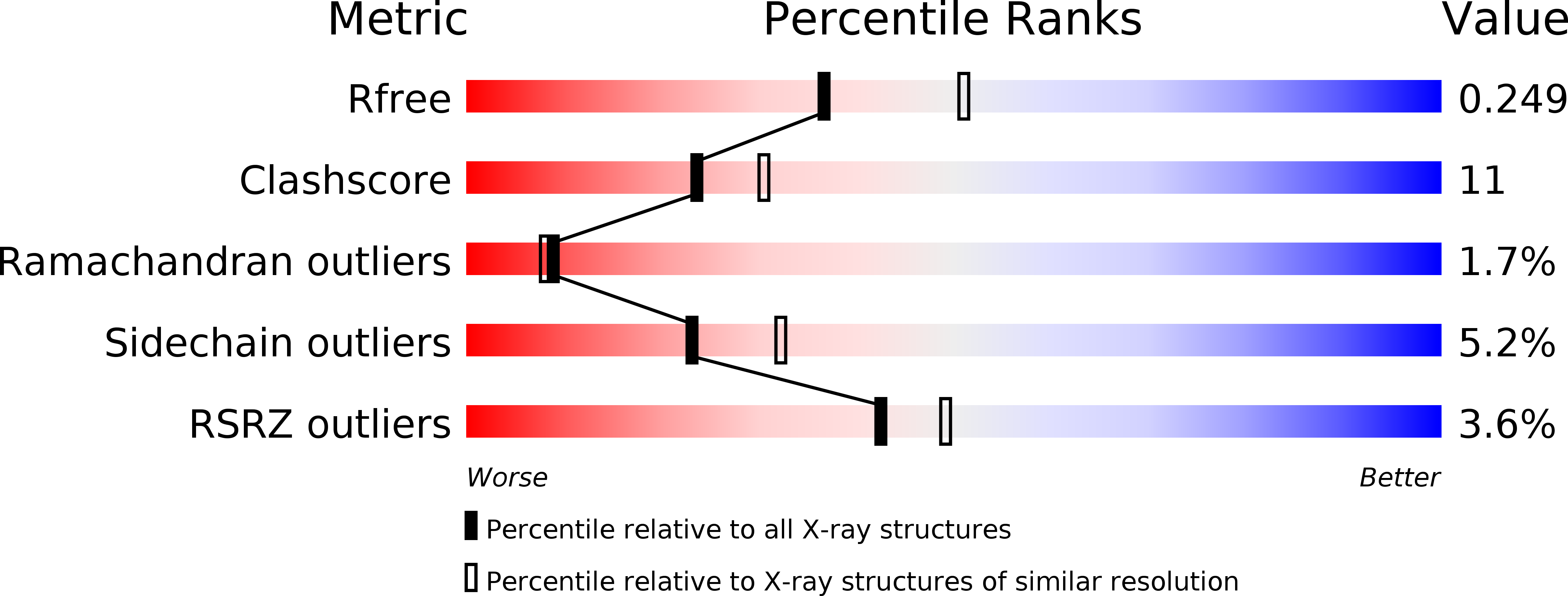Structure of the Mitochondrial Editosome-Like Complex Associated TUTase 1 Reveals Divergent Mechanisms of UTP Selection and Domain Organization.
Stagno, J., Aphasizheva, I., Bruystens, J., Luecke, H., Aphasizhev, R.(2010) J Mol Biol 399: 464-475
- PubMed: 20403364
- DOI: https://doi.org/10.1016/j.jmb.2010.04.021
- Primary Citation of Related Structures:
3HIY, 3HJ1, 3HJ4 - PubMed Abstract:
RNA uridylylation reactions catalyzed by terminal uridylyl transferases (TUTases) play critical roles in the formation of the mitochondrial transcriptome in trypanosomes. Two mitochondrial RNA editing TUTases have been described: RNA editing TUTase 1 catalyzes guide RNA, ribosomal RNA, and mRNA 3'-uridylylation, and RNA editing TUTase 2 acts as a subunit of the RNA editing core complex (also referred to as the 20S editosome) to perform guided U-insertion mRNA editing. Although RNA editing TUTase 1 and RNA editing TUTase 2 carry out distinct functions and possess dissimilar enzymatic properties, their catalytic N-terminal domain and base recognition C-terminal domain display a high degree of similarity, while their middle domains are less conserved. MEAT1 (mitochondrial editosome-like complex associated TUTase 1), which interacts with an editosome-like assembly and is exclusively U-specific, nonetheless shows limited similarity with editing TUTases and lacks the middle domain. The crystal structures of apo MEAT1 and UTP-bound MEAT1 refined to 1.56 A and 1.95 A, respectively, reveal an unusual mechanism of UTP selection and domain organization previously unseen in TUTases. In addition to established invariant UTP-binding determinants, we have identified and verified critical contributions of MEAT1-specific residues using mutagenesis. Furthermore, MEAT1 possesses a novel bridging domain, which extends from the C-terminal domain and makes hydrophobic contacts with the N-terminal domain, thereby creating a cavity adjacent to the UTP-binding site. Unlike the minimal TUT4 TUTase, MEAT1 shows no appreciable conformational change upon UTP binding and apparently does not require RNA substrate to select a cognate nucleoside triphosphate. Because MEAT1 is essential for the viability of the bloodstream and insect forms of Trypanosoma brucei, the unique organization of its active site renders this protein an attractive target for trypanocide development.
Organizational Affiliation:
Department of Molecular Biology and Biochemistry, University of California, Irvine, CA 92697, USA.




















